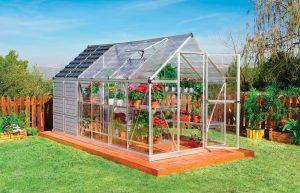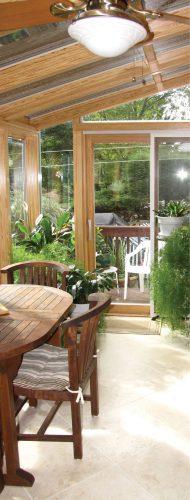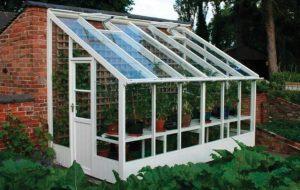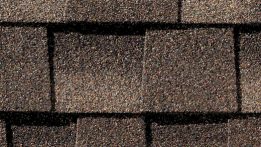 There are many and varied reasons for adding a greenhouse to your property. With the rising costs of fresh vegetables, and concerns over harmful pesticides & GMO’s, greenhouse gardening has become a fast growing sector of the gardening community. For those more interested in cultivating exotic or ornamental plants, greenhouses afford a controlled environment which can be tailored to nurture certain varieties. Or, you may just want a leg up on Mother Nature’s schedule when it comes to pushing out the browns and greys of Winter in favor of the colorful petals of Spring. No matter the reason why, greenhouse gardening lets you, not the weather, control the outcome.
There are many and varied reasons for adding a greenhouse to your property. With the rising costs of fresh vegetables, and concerns over harmful pesticides & GMO’s, greenhouse gardening has become a fast growing sector of the gardening community. For those more interested in cultivating exotic or ornamental plants, greenhouses afford a controlled environment which can be tailored to nurture certain varieties. Or, you may just want a leg up on Mother Nature’s schedule when it comes to pushing out the browns and greys of Winter in favor of the colorful petals of Spring. No matter the reason why, greenhouse gardening lets you, not the weather, control the outcome.
Types of Greenhouses
According to Garden and Greenhouse Magazine, greenhouses fall generally into three types, each with different designs, costs, and utility.
First, stand-alone type greenhouses are detached structures which can incorporate a variety of designs, from gable to hip roofs. For best results, situate the structure in an area that receives full sun, and align the long axis of the structure as close to an East-West orientation as possible to take full advantage of the light. Also, consider proximity to the home. During the colder months, a greenhouse which is a long distance from the home affords less convenience than one situated nearby.
 Lean-to type greenhouses typically attach to a South facing wall of the home, although other orientations are possible. By utilizing the house for one of the walls, costs are cut and the issue of proximity is addressed. These attached structures are often times referred to as conservatories.
Lean-to type greenhouses typically attach to a South facing wall of the home, although other orientations are possible. By utilizing the house for one of the walls, costs are cut and the issue of proximity is addressed. These attached structures are often times referred to as conservatories.
Third, sunrooms traditionally provide space which is both usable as living space and can support plants in a temperature controlled setting, offering a level of versatility and economy of use that appeals to many homeowners.
Greenhouse Gardening Tips
Anthony De Blasi of Mother Earth News offers five tips for successful greenhouse gardening
- Use proven stalwart plants bred for vigor. Varieties which are inherently susceptible to infestation or disease will not perform as well, even in a controlled environment. Instead choose vigorous varieties that are bred to be tolerant and insect resistant.
- Use good soil. De Blasi recommends a 50% mix of garden loam and compost. Or a one third each mix of loam, compost, and peat moss. To each prepared bushel add one 4 inch potful of bone meal as well as one 6 inch potful of manure.
- Provide fresh air. Pests, such as aphids and slugs, as well as fungi and mildew prefer a closed atmosphere. Any greenhouse design should have ventilation or better yet opening windows to allow movement of air.
- Let the sun in. While netting or shades can provide relief from excess sunlight in the heat of summer, placing the greenhouse in the shade will effect performance at other times. Insist on a clear material for the roof, generally a polycarbonate of some kind, that will allow ample sun penetration.
- Don’t crowd your plants. In order to reach their full potential, plants require room to grow. Adjust the size of your greenhouse upward rather than crowd too many plants into too small of a space.
Do It Yourself, Kit, or Purchase Finished?
While a simple google search can return hundreds of DIY “plans” for greenhouses, consider the pitfalls of taking on the project yourself and weigh the advantages and disadvantages involved. Aesthetically, the appeal of a professionally built product will far surpass the home built one. Professional fabricators have the knowledge, expertise, and connections to bring together varying materials and products efficiently.
Also, consider your time. While building a greenhouse yourself may be possible, is the time involved to complete the project available?
And from a standpoint of quality, most DIY projects stretch your dollar so far it ends up breaking. In other words, using cheap materials produces a cheap product which doesn’t stand the test of time. And be sure to check with your local Homeowners association for rules governing location and allowable materials.
There are many kit style greenhouses available online. Most are complicated to put together, are costly, and use small dimension materials. Many times, concessions are necessarily made on the part of kit manufacturers in order to minimize shipping issues and costs. Which is not to say that high quality kits cannot be obtained. However, the average layman with only cursory tools might wish to think twice before undertaking such a build.
Custom built greenhouses can be constructed locally by a contractor which specializes in aluminum fabrication. Utilizing heavy duty powder coated extruded aluminum components, these greenhouses can be tailored to any size or shape. They can be free standing, attached, or incorporated into a sunroom which includes usable living space. And dealing locally, aside from helping the community, will give you more control over the design and build.
Consider Durable Clear Vinyl
Aside from the framework, custom professionally built greenhouses now incorporate cladding products which afford many benefits over older, traditional coverings. High strength vinyl is one of those products. It is flame resistant, mildew resistant, and has a cold crack rating of -40F. As clear as glass, and with as much insulating power, this flexible, lightweight yet strong material is perfect for allowing the maximum amount of sunlight while providing the option for ventilation by incorporation into a movable multiple track panel. These panels can slide vertically or horizontally to control the amount of ventilation desired, or remove completely for ease of access to your plants. You could also incorporate screening into the ventilated areas to control pests.
Roofing Options
 For full sun penetration, a clear polycarbonate roof system is preferred. This product is strong, lightweight, shatterproof, and comes in a variety of thicknesses and configurations. Whether it is tubular, laminar, or polygonal, these roof systems incorporate a series of baffles that encapsulate air and provide insulation. Ranging in thickness between 6mm and 16mm, these twin wall polycarbonate panels have an R value of between 1.6 and 2.5, making them more than suitable for southern climates. With a high light transmittance, UV resistance, and a shatter strength 200 times that of glass, polycarbonate panels provide quality and worry free longevity.
For full sun penetration, a clear polycarbonate roof system is preferred. This product is strong, lightweight, shatterproof, and comes in a variety of thicknesses and configurations. Whether it is tubular, laminar, or polygonal, these roof systems incorporate a series of baffles that encapsulate air and provide insulation. Ranging in thickness between 6mm and 16mm, these twin wall polycarbonate panels have an R value of between 1.6 and 2.5, making them more than suitable for southern climates. With a high light transmittance, UV resistance, and a shatter strength 200 times that of glass, polycarbonate panels provide quality and worry free longevity.
Greenhouse Costs
While DIY greenhouses can be constructed on a shoestring budget, a quality greenhouse will come at some cost. Expect to pay between $2000 and $4000 for a quality kit purchased from a greenhouse supplier. Keep in mind this price does not include assembly. If you elect to have your greenhouse constructed by an aluminum specialist, you can typically get a larger structure, with more features, installed and complete, for a similar cost. Research online for your best price, then call for a local estimate for a custom built product and compare how far your dollar goes to see what’s right for you.
Whether it’s out of the desire to grow healthier, more organic food for yourself and your family, to get a leg up on the neighbors in the yearly landscape competition, or to prolong the therapeutic value of gardening only the true enthusiast understands, adding a greenhouse will increase your property’s value and utility. So if you have a sunny place, an unused space, an open wall, even a patio or deck, consider your options, and don’t be afraid to call your local professional to find your best value. ![]()
Andray Herron
All Custom Aluminum





